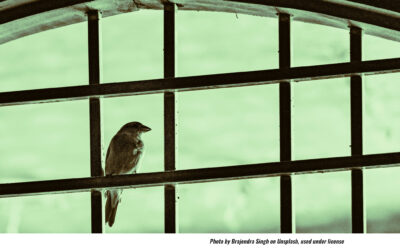LOWER FREDERICK PA – A 2014 study showed that up to 1 billion birds die each year because they strike a window, Cornell University’s Bird Laboratory reports. With continued construction across the U.S. and elsewhere during the past 10 years, it’s reasonable to assume the windows-related death toll has risen since.
Part of the problem, Cornell experts say, is that glass is “worse than invisible” to birds.
For nature’s unwary aviators the glass reflects foliage or sky, both of which attracts them. Even among birds that collide with windows, then appear only temporarily stunned and manage to fly away, some have been found dead later. The usual cause: internal bleeding or bruising, especially on the brain.
It’s a topic that’s recently been explored by the Lower Frederick Township Environmental Advisory Council.
The council each month issues a helpful “Did You Know?” feature by e-mail. It presents the public with information on current environmental news, problems, and solutions. Its February edition covers – you guessed it – birds and window strikes, and it reported on a product that could help.
The e-mail includes a link to a video produced by BBC World Service News (at top) about window glass with an exterior coating that reflects ultraviolet (UV) light. UV light is “just outside the range of visible light” human eyes can detect, NASA scientists explain. Birds, however, can see ultraviolet light thanks to a photoreceptor in their eyes.
Because the window coating reflects ultraviolet light, it “offers a collision deterrence” for birds, yet “does not interfere with the (humans’) view from inside,” the council e-mail states.
There is an expense to consider. In an article published during March 2023 by Forbes, it estimated the cost difference between regular glass and that with a UV coating applied could range between $5 and $14 per square foot.
Saving birds from this kind of trauma is nonetheless important, Cornell contends. Its article offers 13 different ways, depending on a building’s location and circumstances, in which bird strikes can be mitigated. Read it online.
The council’s monthly “Did You Know” pieces, intended to enhance the public’s relationship with the environment, also are worth reading. They’re short, to-the-point, and informative. The article distributed Monday (Feb. 19, 2024), shortly after noon, consisted of only 104 words.
Articles dating back to November 2022 are archived monthly on the council’s webpage.
Photo by Brajendra Singh on Unsplash, used by Travels With The Post under license

 Berks Military History Museum Approved for Expansion
Berks Military History Museum Approved for Expansion